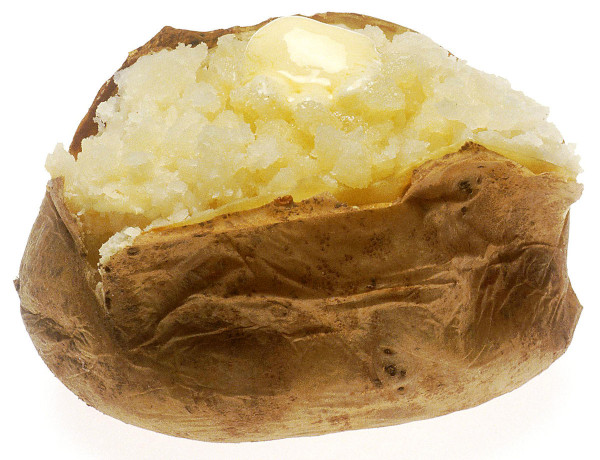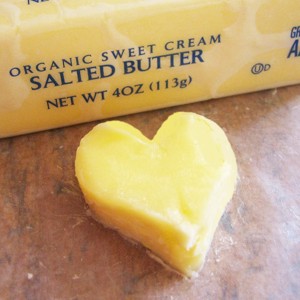A new process that creates low-Fat Butter-like spreads could have major benefits in the war against saturated Fat and the associated risks of heart disease, diabetes and cancer. But I want to know more about the process and the ingredients involved before I give what I’m calling ‘Wutter’ any kind of endorsement…
 Could ultra-emulsified HIPEd Butter substitute do this without separating,
Could ultra-emulsified HIPEd Butter substitute do this without separating,
and liberating its 80 percent water content into my food?
Like those reverse-mortgage deals being advertised intensely all over the TV news channels these days, I have some suspicions that there’s a major drawback or two hiding in the wings with this new development in food engineering. But let me bring you up to speed…
The HIPE process
HIPE is, in fact, short for High-Internal Phase Emulsions. Clearing away al the chemistry and engineering hype surrounding this new development, it just means that a new, creamy spread can be made from as much as 80 percent Water and as little as 20 percent Fat. The potential Butter substitute is very low in Fat compared to the real deal and only 1/4 the Calories of Butter, while being much healthier while offering the same texture, mouth feel, flavour and overall eating experience as Butter. And, no added artificial stabilizers required
How they achieve their magic is still a closely guarded secret among the Cornell University chemists who invented HIPE, but they see big things in its future. I’m not so sure, though.
In a nut shell…
“Emulsifying water and oil is nothing new,” said research paper Senior Author Alireza Abbaspourrad. But by using high-internal phase emulsions (HIPE), “we keep adding water to that oil until the final composition is 80% water and 20% oil.”
“The demand for low-fat, high-protein products has rapidly increased due to consumers’ growing health awareness,” said Study Lead Author Michelle C. Lee.
The implications
“We can add Milk Protein or plant-based Protein. And, since the water acts like a carrier, we can adjust for nutrition and load it with vitamins or add flavors,” Abbaspourrad said. “Essentially, we can create something that makes it feel like butter – and instead of seeing a lot of saturated fat, this has minute amounts. It’s a completely different formulation.”
An unspoken corollary to that is that the HIP process could also be used to make low-fat, low-Cal Peanut Butter, condiments such as ersatz Mustard and Creamy Salad Dressings and Dips, and even Cheese-like products just by reformulating the colouring, flavouring and texturizing additions.
The Food Processing Industry will love this
Imagine plain Water accounting for 70-80 percent of your product’s ingredient list. HIPE-based products would, logically, be ultra-cheap to make. And, being naturally stable, their shelf life and retail consistency would be really easy to control.
My take
I see some really intriguing – and potentially dangerous – issues arising out of the popularization among consumers (should it come to pass) of HIPE-made products, though.
Kids and older folks who might be confused between HIPE products and the real thing might unknowingly consume too much Water and too few nutrients, depending on what they choose to eat in a given day.
The other side to that coin is, we might be aiding and abetting anorexics and pre-anorexics in our households by having a large number of HIPE products available in our pantries.
How much will manufacturers and retailers charge or HIPE products? Will prices reflect the ultra-low ingredient costs of these new products or will the sellers jack up prices reflecting the perceived value of these ‘miracle’ spreads?
On an operational level…
Can you cook with HIPE Butter substitute, without it falling apart?
We don’t really know, yet, what the useful life of these products will be. What if these delicately emusified, hyper-whipped creations are actually susceptible to aging and, like traditional Peanut Butter without artificial stabilizers, might reach a threshold at which they start ‘separating’.
If, at some time point, or exposure to extreme temperatures, or due to the agitation of shipping and handling, the Water separates from the relatively tiny amounts of other ingredients in these products, and consumers see what they’ve actually paid for, there in the jar, would there be some sort of collapse in the market for HIPE products. And, if so, would makers abandon them?
And that’s just the first questions that come off the top of my head. I think we’ll see a long, shallow lab-to-market curve for HIPE products, if they ever actually do make it to the supermarket.
~ Maggie J.

